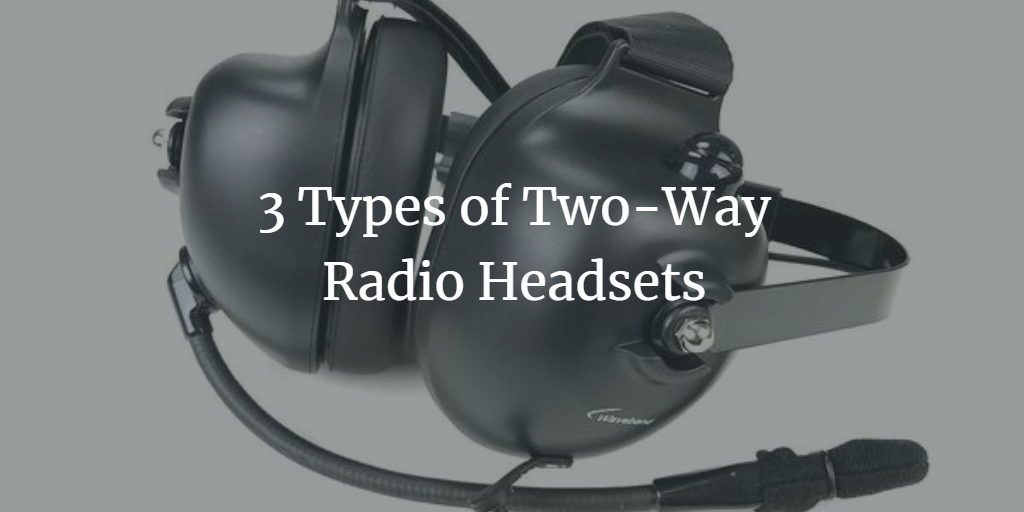When it comes to two-way radios, there are several types of communication headsets. Headsets make it easier to communicate on your two-way radio without the need to pick up your radio. Here's a quick breakdown of three popular styles of two-way radio headsets — dual muff, lightweight, and throat microphone — and how they differ from one another.
- Dual Muff
- Lightweight
- Throat Microphone
What is a Communication Headset?
Communication headsets help keep your hands free and easy to listen. They allow you to hear your radio transmissions without picking up your radio. They consist of an attached microphone with a push-to-talk button and a headphone.
Dual muff
A dual muff style headset has foam cushion earcups that fit completely over both ears. They cancel out loud noise, so you can listen to your radio and protect your hearing at the same time. Dual muff headsets can be over the head or behind the head. On behind-the-head headsets, the bulky headband doesn’t rest on the top of your head, instead, a Velcro strap goes over the head to adjust and keep the headset secure on your head. This style makes it easy to wear with helmets and hard hats.
Dual muff headsets are great for people who have constant exposure to high noise levels. Loud sirens, jackhammers, and machinery can contribute to hearing loss. The NRR ratings of these dual muff headsets help protect against noise-induced hearing loss. Hearing protection is often required by OSHA and recommended when around loud noise for 8+ hours a day. This headset style is popular among firefighters, racing crews, manufacturing or industrial plants, construction sites, and more.

Lightweight
Lightweight two-way radio headsets are typically single ear, while they can be dual ear, with an extended boom microphone and push to talk and go over the head. With a single ear, you can still hear people and noise happening around you while the other ear is your radio transmissions. Just like the name suggest these are lightweight so they’re perfect for extended wear. The lightweight headsets are ideal for moderate noise.
These are not recommended for people exposed to loud noise as they do not have an NRR rating and leave ears exposed. Lightweight headsets are used with dispatchers, police, surveillance, sports, music, production, and more.

Throat Mic
Throat microphones are fastened around the user’s neck and pick up audio vibrations from the user’s throat. How does it work? To put it simply, a sensor or contact microphone senses the vibration in your voice and sound pressure from your trachea to send a signal from your speech. To hear incoming transmissions, a clear acoustic tube earpiece is placed inside the ear.
Throat microphones are great for loud environments like background noise and wind, where a boom microphone might have trouble picking up sound. They’re also great for users who wear face/oxygen masks, respirators, or other full-face gear that prevents them from putting the microphone inside the mask. Throat microphones are popular among the military, pilots, tank operators, law enforcement, EMS, and rescue units.

How to know which is right for you?
To know which is right for you, think of your communication needs. Do you need something for long extended wear? Are you looking for hearing protection to comply with OSHA requirements? Are you looking for something to pick up your voice? Whatever the case may be, understanding your goals for communication will help you decide which is best for you.
Still not confident about what will work best for your team? Waveband Communications has two-way radio accessories for all major types of radios and has helped countless teams find the right solution for them. We’d be happy to help you find the best headset for your two-way radio. Contact us today!



